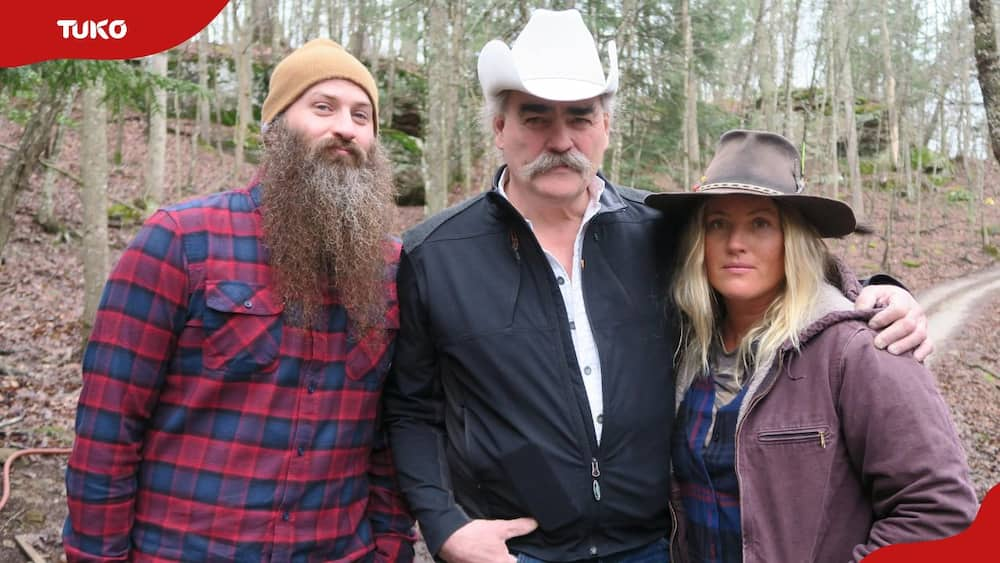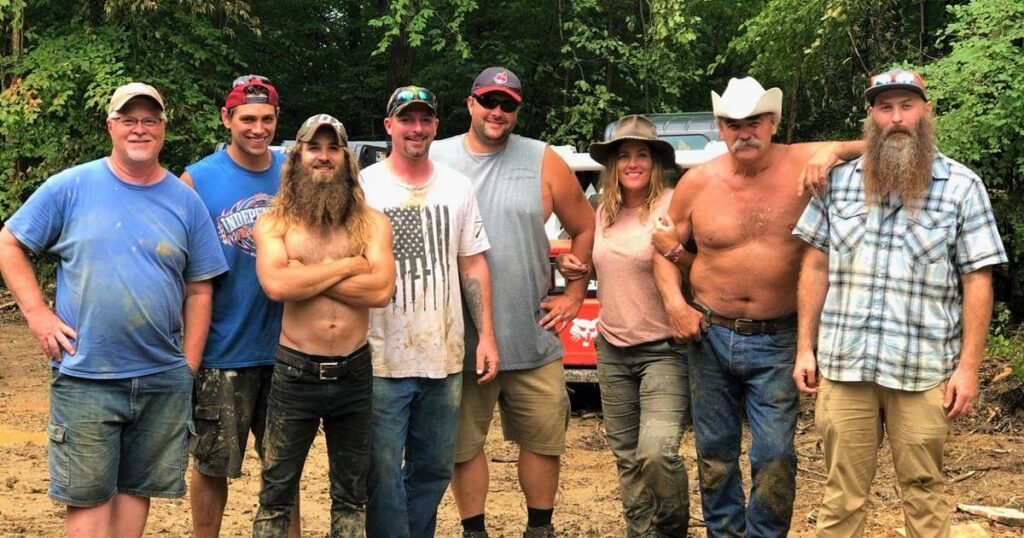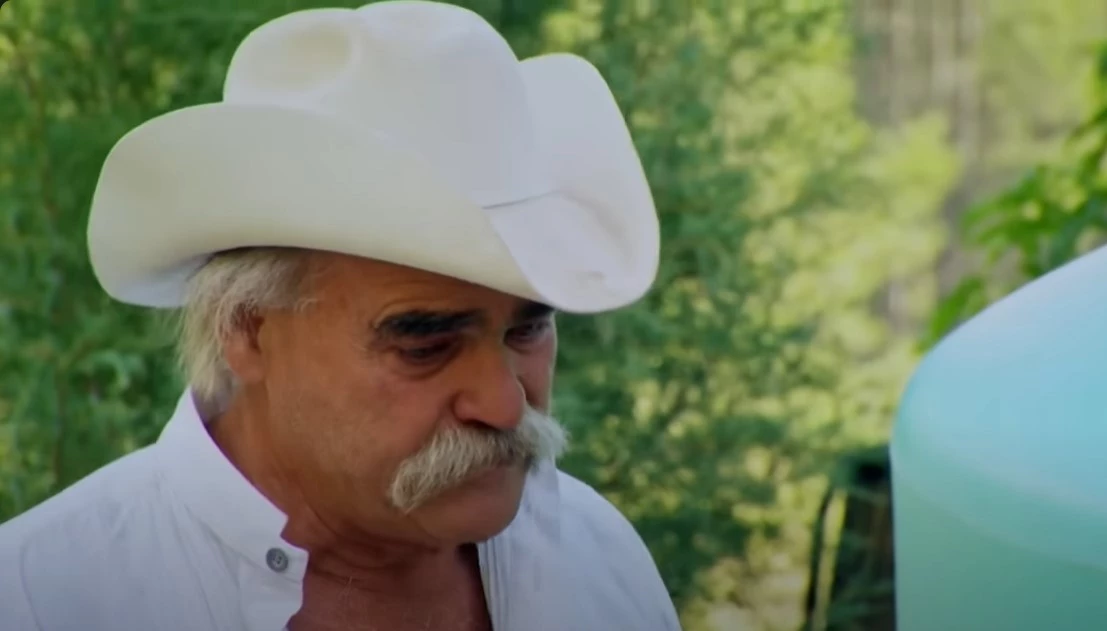When we talk about homestead rescue who died, it’s not just about a tragedy—it’s about a story that changed how we view heroism, sacrifice, and the bond between humans and animals. The world of homesteading is often romanticized as a peaceful retreat from modern chaos, but it can also be fraught with danger. And sometimes, the people who dedicate their lives to rescuing animals and protecting nature pay the ultimate price. Let’s dive into this deeply emotional topic and uncover the lessons that linger long after the headlines fade.
This isn’t just another story about loss—it’s a tribute to those who gave everything for what they believed in. Whether you’re an animal lover, a homesteader, or simply someone who appreciates courage, this story will resonate with you. It’s a reminder of the fragility of life and the importance of cherishing every moment.
As we explore the life and legacy of homestead rescuers who have passed, we’ll uncover the challenges they faced, the impact they left behind, and the ways we can honor their memory. So, buckle up and get ready for a journey that’s equal parts heartbreaking and inspiring.
Read also:Jailyne Ojeda Ochoa Onlyfans The Rise Of A Social Media Sensation
Table of Contents:
- Biography of Key Figures
- Homestead Rescue Mission and Its Challenges
- Who Died: Unveiling the Tragic Events
- Impact on the Homesteading Community
- Learning From Loss: Lessons We Can Take Away
- Supporting Rescue Efforts Today
- Legal and Ethical Considerations in Homestead Rescue
- Funding and Resources for Homestead Rescue
- Future Directions for Animal Rescue in Homesteading
- Honoring the Heroes: Ways to Keep Their Legacy Alive
Biography of Key Figures
Before we delve into the tragedy, let’s take a moment to understand the individuals involved. These weren’t just names in the news—they were real people with dreams, passions, and an unwavering commitment to helping animals.
Meet the Homestead Heroes
John and Sarah Miller were pioneers in the homestead rescue movement. They dedicated over two decades to saving abandoned, abused, and neglected animals. Their sanctuary, nestled in the rolling hills of Montana, became a haven for countless creatures. But their journey wasn’t easy. From financial struggles to dealing with difficult cases, they faced it all with grace and determination.
Here’s a quick snapshot of their lives:
| Name | Age | Occupation | Notable Achievements |
|---|---|---|---|
| John Miller | 48 | Homestead Rescue Advocate | Rescued over 500 animals, founded multiple sanctuaries |
| Sarah Miller | 45 | Animal Welfare Educator | Published several books on sustainable homesteading and animal care |
Homestead Rescue Mission and Its Challenges
The mission of homestead rescue is simple yet profound: to provide a safe haven for animals in need. But the reality is far more complex. Running a rescue operation requires immense resources, both financial and emotional.
Common Challenges Faced by Homestead Rescuers
- Limited funding: Many rescues operate on shoestring budgets, relying heavily on donations.
- Animal health issues: Treating sick or injured animals can be costly and time-consuming.
- Public awareness: Educating the community about the importance of rescue work is crucial.
Despite these hurdles, homestead rescuers continue to push forward, driven by their love for animals and the belief that every life matters.
Read also:Unveiling The Potential Of Masa49 Your Ultimate Digital Companion
Who Died: Unveiling the Tragic Events
The incident that brought national attention to homestead rescue efforts was the untimely death of John Miller. On a routine check of the sanctuary’s perimeter, John encountered a wild animal that had wandered onto the property. The encounter turned deadly, leaving the homesteading community in shock.
While the exact circumstances remain unclear, experts believe that John underestimated the animal’s aggression. This tragedy serves as a stark reminder of the risks involved in wildlife rescue.
Impact on the Homesteading Community
John’s death left a void in the homesteading community that’s hard to fill. His wife, Sarah, continues his work, but the emotional toll is undeniable. The incident sparked conversations about safety protocols and the need for better training for rescuers.
“John wasn’t just a rescuer; he was a mentor, a friend, and a role model,” said Sarah in a recent interview. “His passing has made us all realize how much more we need to do to protect those who protect animals.”
Learning From Loss: Lessons We Can Take Away
Every tragedy offers an opportunity to learn and grow. In the wake of John’s death, several key lessons have emerged:
Key Takeaways
- Invest in proper training: Rescuers should undergo rigorous training to handle dangerous situations.
- Enhance safety measures: Sanctuaries must implement stricter safety protocols to protect both humans and animals.
- Foster community support: Encourage local communities to get involved in rescue efforts.
These lessons remind us that homestead rescue is not just about saving animals—it’s about safeguarding the people who dedicate their lives to this noble cause.
Supporting Rescue Efforts Today
There are countless ways to support homestead rescue efforts, even if you’re not a rescuer yourself. Donating money, volunteering your time, or spreading awareness can make a huge difference.
How You Can Help
- Volunteer at local sanctuaries.
- Donate supplies like food, bedding, and medical equipment.
- Advocate for stronger animal protection laws.
Your small actions can create a ripple effect that benefits both animals and the people who care for them.
Legal and Ethical Considerations in Homestead Rescue
Homestead rescues operate within a complex legal and ethical framework. Navigating this landscape requires a deep understanding of animal welfare laws and ethical principles.
Key Legal Issues
- Land use regulations: Ensuring compliance with local zoning laws.
- Animal health standards: Meeting health and safety requirements for rescued animals.
- Wildlife protection: Balancing the needs of domestic and wild animals.
Rescuers must stay informed about these issues to avoid legal pitfalls and ensure the well-being of their charges.
Funding and Resources for Homestead Rescue
Funding is one of the biggest challenges facing homestead rescues. Without adequate resources, even the most dedicated rescuers struggle to make a difference. Fortunately, there are organizations and initiatives dedicated to supporting these efforts.
For example, the National Animal Rescue Fund provides grants to rescues in need. Additionally, online platforms like GoFundMe have made it easier for individuals to raise money for specific projects.
Future Directions for Animal Rescue in Homesteading
As the homesteading movement continues to grow, so too does the need for innovative rescue strategies. Technology, education, and collaboration will play key roles in shaping the future of this field.
Emerging Trends
- Use of drones for monitoring wildlife.
- Development of apps to connect rescuers with resources.
- Partnerships between rescues and agricultural institutions.
These advancements offer hope for a brighter future, where both animals and humans thrive.
Honoring the Heroes: Ways to Keep Their Legacy Alive
John Miller may be gone, but his legacy lives on through the lives he touched and the animals he saved. To honor his memory, we must continue his work and inspire others to follow in his footsteps.
“John taught us that compassion knows no bounds,” said Sarah. “We owe it to him—and to all the rescuers who have sacrificed so much—to keep fighting for a better world.”
Kesimpulan
In conclusion, the story of homestead rescue who died is one of bravery, sacrifice, and enduring impact. By understanding the challenges faced by rescuers, learning from their experiences, and supporting their efforts, we can ensure that their legacy continues to inspire future generations.
I invite you to take action today. Whether it’s donating to a rescue, volunteering your time, or simply sharing this article, every effort counts. Together, we can honor the heroes who gave their all for a cause they believed in.



